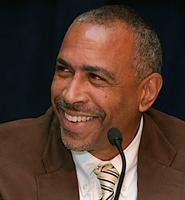
This year marks the 60th anniversary of a legally desegregated public school system thanks to the Supreme Court case of Brown v. Board of Education. Pedro Noguera, the Peter L. Agnew Professor of Education at New York University, explained in a Sept. 22 lecture that although this event was viewed as the first step in abolishing American apartheid, today, schools in the Northern U.S. are more likely to be segregated than those in the South. While this is, of course, not a legally enforced separation, it persists nonetheless due to the gentrification of suburbs, a product of social class, not race, as Noguera highlighted.
Although the Great Recession has ended, in the United States 50 million people live below the poverty line; this means that 22% of all American children live in poverty, the second highest child poverty rate among wealthy nations.
Since 2009, the United States’ education ranking among the world’s 65 most-developed countries, has fallen six rankings in both mathematics and science, and 10 rankings in reading proficiency1. To combat this, the nation’s strategy has been to raise its standards through initiatives such as No Child Left Behind and Race to the Top, neither of which have ameliorated the problem.
Noguera believes that the true cause of our falling rank, however, is not low standards, but poverty. He explained that if you were to exclude the 22 percent of students who are living below the poverty line when calculating our international standing, America would rise into the top 10 countries.
Yet, ignoring approximately one quarter of American students, will not solve the country’s education crisis so the government has turned its eye toward teachers. Through mandated standardized testing, the government evaluates teachers based on their students scores and uses these assessments to threaten the jobs of teachers and administrators, as well as federal funding for the school district.
Due to the fact that the majority of struggling school districts are already underfunded, administrators felt the pressure to raise their school’s scores. This led the schools to reshape their curriculums, now focusing solely on the material covered on the standardized tests, while taking away activities deemed “unnecessary,” such as art classes, music classes and recess.
Noguera explained that with policy changes heavily focused on the role of “lazy teachers,” the government has tried use threats and humiliation to improve the school system, but has actually had a detrimental effect on an entire generation of students. Using New York State as an example, Noguera exposed the faulty logic that holds students in Utica to the same standards as their peers from Scarsdale.
“The achievement gap is an educational manifestation of social inequality,” Noguera stated, “which results from the combined disadvantages of the preparation gap, the allocation gap, and the gap in opportunities.” The preparation gap refers to the lack of pre-schooling available for low-income families; the allocation gap refers to the consistent allotment of more funding to schools serving middle- and upper-class families; and the gap in opportunities refers to the reality that students in poverty-stricken school districts have less access to extracurricular activities, such as music lessons, sports teams, internships, and social organizations like Boy Scouts of America.
Referring to economist Joseph Stiglitz, Noguera said “Americans are told that one’s worth is determined by his or her own decisions, not one’s birthright. If we didn’t want to become a caste society, then why is the strongest predictor of academic achievement one’s family income?”
Against these odds, some disadvantaged school systems have managed to turn themselves around. A 10-year study of education reform in Chicago schools yielded insights into what makes for a successful education. The five most important factors are a coherent instructional guidance system, meaning the faculty works together to create cohesive and goal-oriented lesson plans; the development of the professional capacity of its faculty; strong parent-community-school ties; a student-centered learning climate; and leadership that drives change.
Ineffective policies, underfunded schools, unequal opportunities and inadequate preparation create formidable obstacles for effective education reform. Poverty remains a strong indicator of academic inadequacy, although Noguera has noticed that drawing on community resources and shifting the focus from achievement to engagement, produces life-long learners with a thirst for knowledge.
1http://www.npr.org/blogs/thetwo-way/2013/12/03/248329823/u-s-high-school-students-slide-in-math-reading-science
